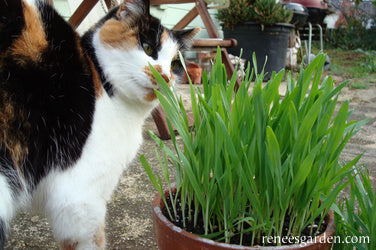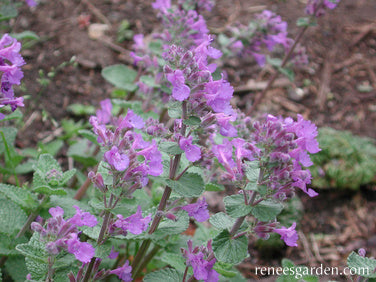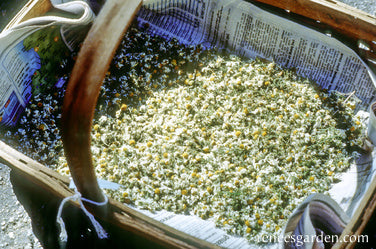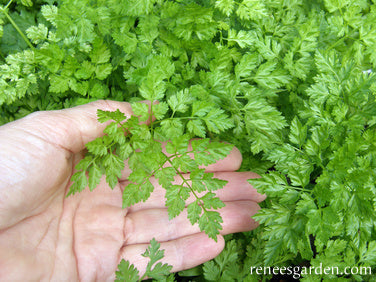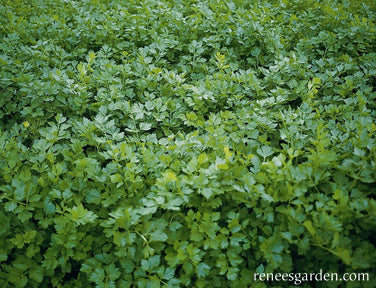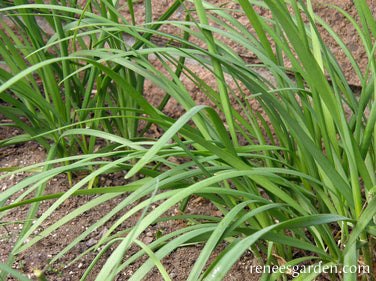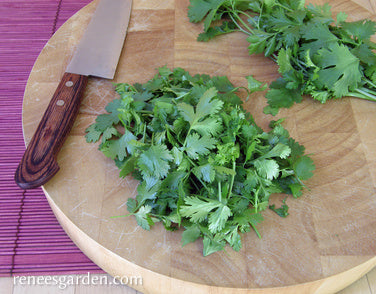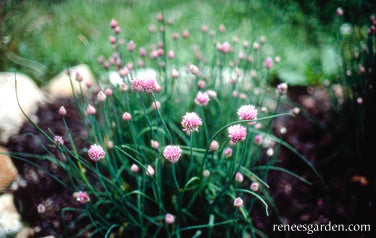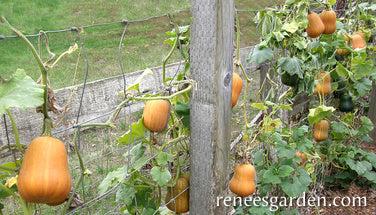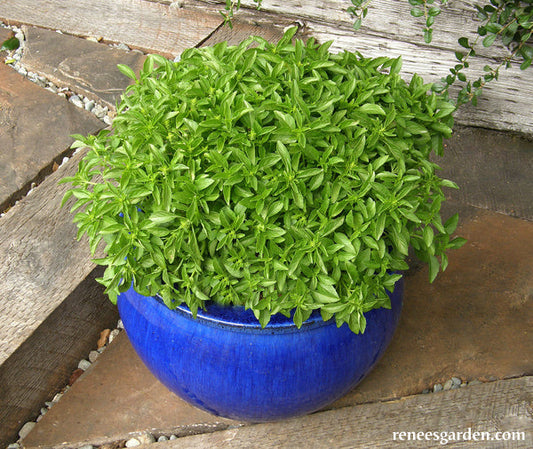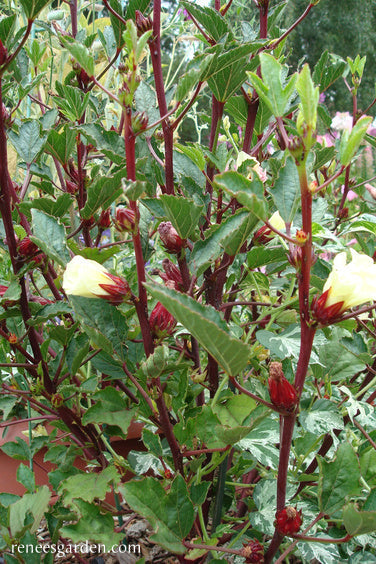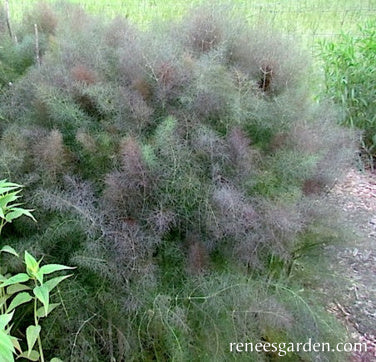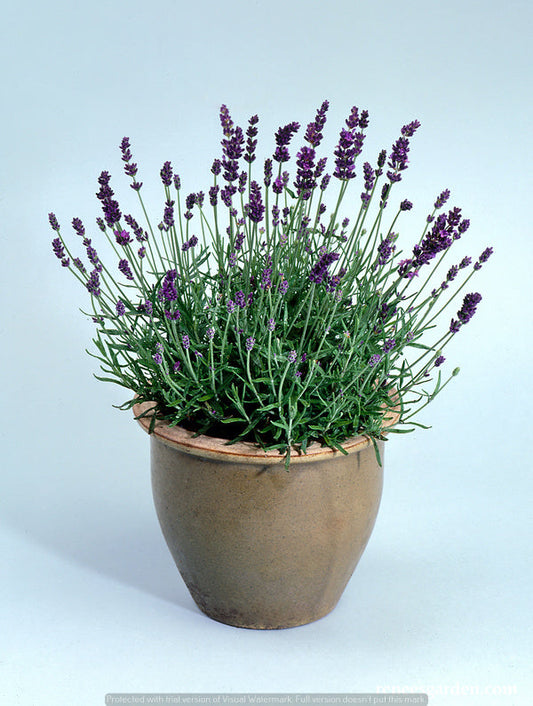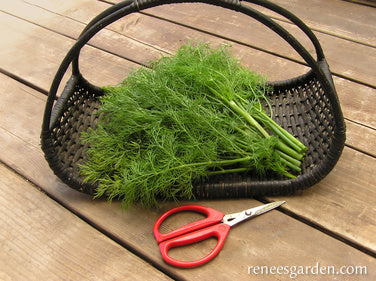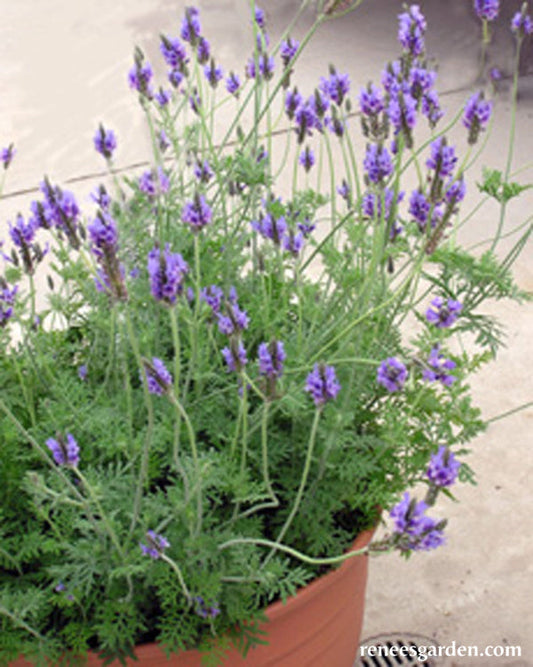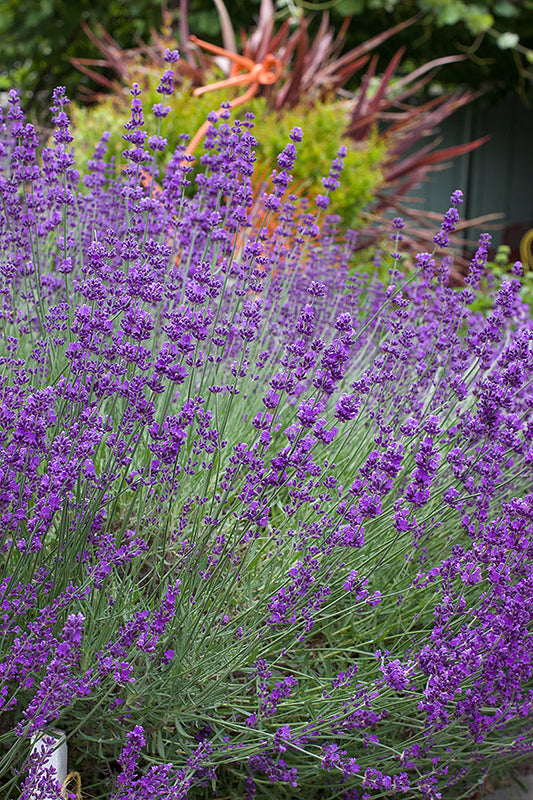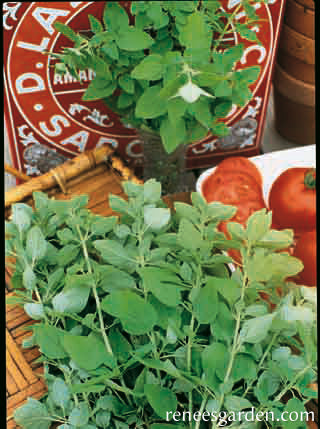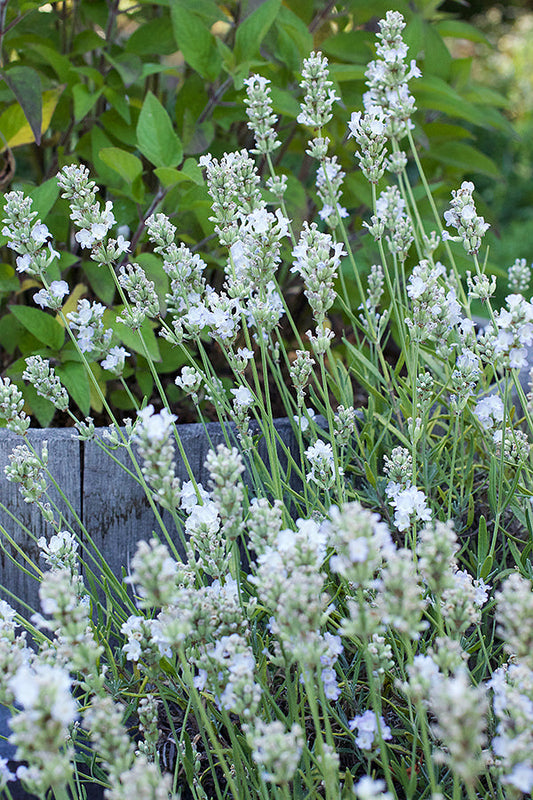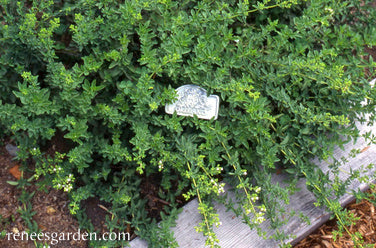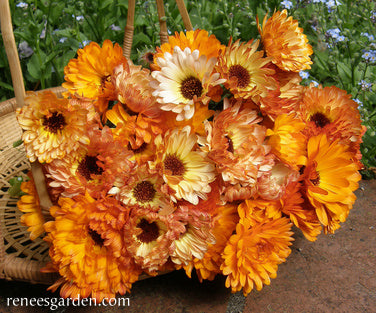All
-
Kitty Queen's Four Grass Mix
ANNUAL CEREAL GRASSES
Oat, rye, wheat, barley.
Organically grown.FOR BEST RESULTS
Fill a 6 inch diameter or larger, pot with moistened planting mix. Sprinkle seeds 1/4 inch apart over the surface, cover 1/2 inch deep with mix, and water gently. Keep pot moist but not soggy, and be sure to provide a good light source. The pot of grasses can be kept indoors for pets to graze on at their leisure. Fertilize every 2 weeks using a non-chemical fertilizer, such as fish emulsion.
DINING IDEAS
Most cats will recognize the grass as a treat right away. To encourage finicky eaters, place the pot beside the kitty’s food and spritz it with water. This usually does the trick.
GROWING NOTES
Our ample packet provides enough seed for 3 to 4 sowings. The grasses are ready for pets to nibble when the blades are at least a few inches tall, normally in about 10-14 days after sowing. If grasses get too tall and fall over, “mow” them down to 2 inches with a pair of scissors.
For a constant supply, try sowing one pot, then another pot a week later. Give your pet access to only one pot of grass at a time, and switch pots each week. When grass does not re-grow vigorously after cutting down and fertilizing, discard and start again with new seed and soil mix.
DINING IDEAS
Most cats will recognize the grass as a treat right away. To encourage finicky eaters, place the pot beside the kitty's food and spritz it with water. This usually does the trick and cats who newly discover this treat delight in it!Regular price $4.89Sale price $4.89Unit price / per -
Landscaping Herbs Catmint
BEST TO START EARLY INDOORS
In spring, 6 weeks before last expected frost, sow seeds 1 inch apart in a container of seed starting mix. Cover lightly, keep warm and moist, and provide a strong light source. Feed every 2 weeks with half-strength fertilizer. Once seedlings are well-established, transplant 2 to 3 inches apart into deeper containers so root systems have room to develop. When 3 to 4 inches tall, acclimate to outdoor conditions and plant in full sun 12 inches apart.
TO START OUTDOORS
Plant in full sun in ordinary garden soil in spring when weather is settled and night temperatures are above 50°F (10°C). Sow seeds in well-worked soil 1/4 inch deep and 4 inches apart. Keep evenly moist while waiting for seedlings to emerge. Thin seedlings 12 inches apart.
GROWING NOTES
Plant drifts of this pretty herbal ground cover in any sunny spot. It grows into 12 inch tall, softly rounded mounds. Once first flush of flowers ends, cut back to about 6 inches and plants will come back into bloom. Many cats enjoy frolicking in Catmint’s sturdy foliage which can handle their affectionate advances.Regular price $2.99Sale price $2.99Unit price / per -
Flowering Herbs Bodegold Chamomile
ANNUAL
Spring/summer/fall harvest
Frost hardyTO START DIRECTLY IN THE GARDEN
Sow seeds as thinly as possible in a well-drained, finely textured garden bed in full sun and cover lightly. Keep evenly moist while awaiting germination. Thin seedlings to 4 inches apart before they become crowded.
TO START INDOORS
Sow seeds in early spring in a container of seed starting mix. Cover seeds very lightly and keep evenly moist until seedlings emerge. Provide a good light source until seedlings are about 2 inches tall. Transplant 4 inches apart after gradually acclimating to outdoor conditions. Don’t let seedlings get too big or crowded before planting out.
GROWING NOTES
Start chamomile in early spring for sturdy growth before warm weather initiates flowering. Harvest every few days just as the petite daisylike flowers are fully open, but before the petals dry up. Air dry blossoms indoors in a single layer for several days, then store in a sealed container. Steep in boiling water for a lovely scented tea. Leave a few flowers in the garden to set seed, then shake spent plants and they will often self-sow to bloom next season. blossoms with their dainty white petals and gold centers and simply air dry for making fragrant pineapple-scented tea. Serve with a little honey to settle the stomach and soothe the nervous system before retiring.Regular price $2.99Sale price $2.99Unit price / per -
Heirloom Herbs French Chervil
ANNUAL
Spring/summer/fall harvest
Takes light frostEASIEST TO START OUTDOORS
Start chervil in early spring when weather is settled but still cool. Plant in filtered sun or light shade if climate is very hot. Sow seeds 1 to 2 inches apart in a well-worked fertile seed bed. Cover very lightly and keep evenly moist while awaiting germination. Sow again for a fall crop when weather cools in late summer or early fall.
THIN OR TRANSPLANT
Thin seedlings to stand 4 inches apart when they are large enough to handle.
GROWING NOTES
Chervil needs rich moist soil and ample moisture for lush growth. Thin early and keep well weeded and watered. Begin to harvest leaves sparingly once plants have 8 to 10 leaves. Fertilize every 2 to 3 weeks with a high nitrogen source or liquid fish emulsion solution. Because chervil goes to seed quickly in hot weather, the best way to have a good supply is to make successive sowings until the weather gets too hot, then plant again as summer begins to cool for fall harvest. Enjoy fresh as chervil does not hold its flavor when dried. Use the leafy sprigs in salads or add to hot dishes at the end of cooking to preserve chervil’s delicate flavor.Regular price $3.39Sale price $3.39Unit price / per -
Heirloom Herbs Amsterdam Seasoning Celery
BIENNIAL, GROWN AS ANNUAL
Spring/summer/fall harvest
Frost HardyTO PLANT DIRECTLY OUTDOORS
Start leaf celery in spring, when weather is settled, but still cool. In mild winter climates, seed can also be started in fall. Plant in full sun or, in hot areas, where plants will get afternoon shade. Sow seeds 1 to 2 inches apart into well worked, fertile soil. Cover 1/4 inch deep. Be patient and be careful to keep seedbed evenly moist while awaiting germination which can be uneven. Thin groups of 3 to 4 seedlings 8 inches apart when several inches tall.
TO START EARLY INDOORS
Start in early spring 6 weeks before night temperatures will warm up to 50°F (10°C). Sow seeds 1 to 2 inches apart in a container of seed starting mix. Barely cover. Keep evenly moist but not soggy until germination takes place over 3 weeks.Provide a strong light source as soon as seedlings emerge. Plant out groups of 3 to 4 seedlings when 2 to 3 inches tall, spacing groups 8 inches apart.
GROWING NOTES
Water regularly and fertilize monthly with a high nitrogen source. Seasoning celery forms sprays of attractive leaves rather than thick stalks. Harvest sprays of leaves as needed once plant is well established. Hang leafy bunches upside down in a cool, well ventilated place to easily air dry for future use.Regular price $3.69Sale price $3.69Unit price / per -
Heirloom Herbs Garlic Chives
PERENNIAL
Spring/summer/fall harvest
Frost hardyTO PLANT OUTDOORS
In the cool weather of early spring, sow clusters of 7 to 10 seeds 8 to 10 inches apart in well-worked, fertile soil in sun or part shade. Cover 1/4 inch deep and press soil firmly over seeds. Keep evenly moist as seeds germinate slowly over several weeks. Emerging seedlings have very slender grass-like leaves that mature into mounds.
TO START EARLY INDOORS
In early spring, sow seed thinly in a container of seed starting mix and cover 1/4 inch deep. Keep evenly moist as seedlings slowly emerge and provide a good light source until ready to plant outdoors. Transplant when seedlings are about 2 to 3 inches tall after gradually acclimating plants to outdoor conditions.
THIN OR TRANSPLANT
Space clusters of 7 to 10 seedlings 8 to 10 inches apart.
GROWING NOTES
Garlic chives grow slowly at first, but soon mature into sturdy bright green mounds crowned with pretty white edible blossoms in late spring and summer. After bloom finishes, shear entire plant back to 4 inches to encourage regrowth of tender new leaves. These hardy, self-sufficient plants are attractive additions to the flower or herb garden.
Regular price $2.99Sale price $2.99Unit price / per -
Kitchen Herbs Slow-Bolt Cilantro
ANNUAL
Spring/summer/fall harvest
Can handle light frostsEASIEST TO START OUTDOORS
In early spring, sow Cilantro seed directly into well-drained fertile soil 1 to 2 inches apart in rows 8 inches apart in full sun. Cover 1/4 inch deep and firm soil over seeds. Keep seed bed evenly moist as seedlings emerge over 10 to 20 days. Make new sowings every few weeks until mid summer for continuous harvests of fresh leaves.
THIN OR TRANSPLANT
Cilantro doesn’t transplant well; we advise direct garden sowing. Thin seedlings 3 to 4 inches apart before plants get crowded.
GROWING NOTES
Cilantro plants flower, then set seed quickly as plants mature. Lushest, leafy growth takes place in cooler weather; plant early and throughout cool spring weather and sow again in fall, particularly in mild winter areas. To have a constant supply of fresh leaves, sow every 2 to 3 weeks through early summer.
Keep cilantro at its leafy stage longer by keeping plants well watered and being careful to thin seedlings early. Let some of the lacy flowers form to attract beneficial insects and pollinating bees. The fragrant round seeds are called coriander, an aromatic spice used in baking.
Regular price $2.99Sale price $2.99Unit price / per -
Kitchen Herbs Fine Leaf Chives
PERENNIAL
Spring/summer/fall harvest
Frost hardyTO PLANT OUTDOORS
In the cool weather of early spring, sow clusters of 7 to 10 seeds about 8 to 10 inches apart in well-worked, fertile soil in sun or part shade. Cover 1/4 inch deep and press soil firmly over seeds. Keep evenly moist as seeds germinate slowly over several weeks. Emerging seedlings have very slender grass-like leaves that mature into mounds.
TO START EARLY INDOORS
In early spring, sow 7 to 10 seeds in individual containers of starting mix and cover 1⁄4 inch deep. Keep evenly moist as seedlings slowly emerge and provide a good light source until ready to plant outdoors. Transplant clusters of seedlings when 2 to 3 in. tall after gradually acclimating plants to outdoor conditions.
THIN OR TRANSPLANT
Space clusters of 7 to 10 seedlings 8 to 10 inches apart.
GROWING NOTES
Chives bear lilac-pink blossoms in late spring and summer. After bloom finishes, cut entire plant back to 2 inches to encourage regrowth of tender new leaves. Given plenty of moisture and a location out of fierce sun, chives are hardy, self-sufficient plants.Regular price $2.99Sale price $2.99Unit price / per -
Baby Butternut Squash Honey Nut
BEST TO START OUTDOORS
Winter squash needs full sun, rich fertile soil and warm temperatures. Wait to plant until temperatures stay above 50°F (10°C) day and night. Sow groups of 2 to 3 seeds 2 feet apart and 1 inch deep in rows 4 feet apart. Thin to 1 strong seedling per group to give vines room to ramble or climb. Or make slightly mounded hills 2 to 3 feet across and 6 feet apart and plant 4 to 5 seeds in each hill. When seedlings have several sets of leaves, thin to the strongest 3 seedlings per hill.
GROWING NOTES
Protect young seedlings from marauding birds by covering with plastic berry baskets at sowing time, removing before plants get crowded. To save space, and make picking easy, Honey Nut vines can easily be trained up fences, trellises or teepees 4 to 6 feet tall.
HARVEST AND USE
All winter squashes need to mature properly, so wait to pick until rinds are fully colored up from dark green to orangey-tan and tough enough to resist piercing with a fingernail and vines have died back. Then cut, leaving a good stem handle. Let them cure for 10 days in the sun, then store in a cool dry place and they’ll keep for months. In the kitchen, cut Honey Nuts in half then bake until tender. Flesh is meltingly sweet and delicious.Regular price $4.39Sale price $4.39Unit price / per -
Kitchen Herbs Windowbox Mini Basil
ANNUAL
Summer/fall harvest
Heat-loving, frost tenderTO PLANT DIRECTLY INTO THE GARDEN
When late spring weather has thoroughly warmed up, sow seeds 1 inch apart in well worked fertile soil in full sun. Cover 1/4 inch deep, firm soil and keep seedbed moist. Germination takes 1 to 2 weeks. After seedlings are well established, thin or transplant 8 inches apart to allow plants room to mature.
TO START EARLY INDOORS
Sow seeds 1 inch apart in a container of seed starting mix, 4 to 6 weeks before last expected frost. Keep warm and evenly moist, and provide a good light source. When seedlings are large enough to handle and weather is warm, acclimate gradually to outdoor conditions before planting in the garden 6 to 8 inches apart.
GROWING NOTES
Remember — it is critical to plant basil in the garden only after late spring day and nighttime temperatures stay above 50°F (10°C). Harvest sprays of little leaves after plants have filled out to form neat umbrella shapes. Plants make a richly scented edging for flower or herb beds, or plant in pots at least 6 inches in diameter per plant. Keep flower buds pinched off to extend harvesting and feed regularly to promote new growth.Regular price $2.99Sale price $2.99Unit price / per -
Heirloom Cilantro
EASIEST TO START OUTDOORS
In early spring, sow Cilantro seed directly into well-drained fertile soil 1 to 2 inches apart in rows 8 inches apart in full sun. Cover 1/2 inch deep and firm soil over seeds. Keep seed bed evenly moist as seedlings emerge over 10 to 20 days. Make new sowings every few weeks until mid summer for continuous harvests of fresh leaves.
THIN OR TRANSPLANT
Cilantro doesn’t transplant well; we advise direct garden sowing. Thin seedlings 3 to 4 inches apart before plants get crowded.
GROWING NOTES
Cilantro plants flower, then set seed quickly as plants mature. Lushest, leafy growth takes place in cooler weather; plant early and throughout cool spring weather and sow again in fall, particularly in mild winter areas. To have a constant supply of fresh leaves, sow every 2 to 3 weeks through early summer. Keep cilantro at its leafy stage longer by keeping plants well watered and being careful to thin seedlings early. Let some of the lacy flowers form to attract beneficial insects and pollinating bees. The fragrant round seeds are called coriander, an aromatic spice used in baking.
Regular price $4.89Sale price $4.89Unit price / per -
Herbal Tea Zinger Hibiscus
ANNUAL
Summer/Fall Harvest
Heat Loving/Frost TenderBEST TO START INDOORS
In early spring, start seeds indoors 6 to 8 weeks before outdoor temperatures are reliably in the 50°F (10°C) range. Sow seeds 1/2 inch deep and 1 inch apart in seed starting mix. Keep very warm 75 to 80°F (24 to 27°C) and moist but not soggy. Provide a strong light source. When 2 inches tall, transplant seedlings into individual 4 inch pots. Feed with half-strength liquid fertilizer every 2 weeks until weather is warm and nights stay above 55°F (13°C). Gradually acclimate seedlings to the outdoors.
GROWING NOTES
Hibiscus thrive in a sunny, very warm spot in rich and well-drained soil, so add compost or aged manure to the planting bed. Transplant seedlings 8 to 12 inches apart. Pinch tops when 10 inches tall to encourage a bushy, branching form.
For Containers: choose pots 18 inches in diameter and 16 to 18 inches tall.
HARVEST AND USE
After flowers have finished blooming, harvest the deep-red, teardrop-shaped, calyxes at the base of each blossom. Snap off calyxes that are ready, removing spent flower if still attached Use fresh, or air-dry for longer storage.
To Dry: spread in a single layer on paper towels or cotton cloth for 7 to 10 days in a cool, dry place indoors out of heat and humidity. Store in an airtight container. For delicious tea, crush and steep several tablespoons to each cup of boiling water. Honey or sugar and lemon are nice additions. Makes a beautiful iced tea. For a cocktail, combine with sugar, lemon, a little ginger syrup and good rum.
Regular price $3.99Sale price $3.99Unit price / per -
Heirloom Butterfly Herbs Smokey Bronze Fennel
TO PLANT DIRECTLY IN THE GARDEN
In spring when danger of hard frost is past, sow seeds 1 inch apart in finely worked, well drained, fertile soil in full sun. Cover 1/2 inch deep, firm soil and keep seed bed moist. Germination takes 2 to 3 weeks. After seedlings are well established, carefully thin or transplant 1 foot apart to allow plants room to mature.
TO START EARLY INDOORS
Sow thinly in a container of seed starting mix, 4 to 6 weeks before last expected frost. Keep warm and evenly moist, and provide a good light source. When seedlings are 3 to 4 inches tall, acclimate gradually to outdoor conditions before carefully transplanting as above.
GROWING NOTES
Plant in very well-drained soil and keep a close eye on young seedlings, which grow slowly at first – their unusual bronze color can make them easy to weed out by accident! A prime butterfly plant, the copper-bronze fronds of Smokey Bronze fennel send up tall branching stalks crowned by intricate yellow flowers that provide valuable nectar and pollen to ladybugs, lacewings and other beneficial insects. Bronze fennel’s deep colored foliage provides a beautiful contrast to the green foliage and bright hot colors of summer annuals like cosmos, zinnias and sunflowers.
Regular price $3.69Sale price $3.69Unit price / per -
Container Herbs French Perfume Lavender
PERENNIAL
Late spring/early summer bloom
Frost hardy to zone 5 (zone 4 with protection)BEST TO START INDOORS
In early spring, sow seeds about 1 inch apart in a container of seed starting mix, cover very lightly and keep at 60-70°F (16-21°C) in a spot with good air circulation. Keep evenly moist but not soggy. Seedlings emerge slowly and unevenly over 18 to 28 days. Provide a good light source. When seedlings have several sets of leaves, transplant into 4 inch plastic pots. Provide consistent water, but let soil dry out on top between waterings. Feed every few weeks. Plant outside when plants are 2 to 3 inches tall after gradually acclimating to outdoors.
GROWING NOTES
Start these small seeds indoors so you can tend them carefully. When well established, plant seedlings out into pots filled with new potting mix with excellent drainage or in a well drained, sunny garden spot with good air circulation. Plant one seedling per individual pot at least 8 inches wide and deep or space multiple plants 8 inches apart in larger, deeper containers. Feed monthly during the growing season. Plants bloom the first season, but come into fullest flower by the second summer. Harvest stems of scented florets just as they start to open and air dry to use as aromatic sachets. At season's end, shape plants by cutting off spent flower stalks down to top crown of leaves.Regular price $4.99Sale price $4.99Unit price / per -
Kitchen Herbs Dukat Leafy Dill
ANNUAL
Spring/summer/fall harvest
Can handle light frostsEASIEST TO PLANT OUTDOORS
In early spring, sow dill seed directly into well-drained garden soil 1 to 2 inches apart in rows 6 inches apart in full sun and cover seeds 1/4 inch deep. Make small sowings every few weeks to have successive harvests of fresh leaves. Keep seed bed evenly moist while awaiting germination in 7 to 14 days.
TO START INDOORS
Sow dill seed thinly in individual pots of seed starting mix. Cover 1/4 inch deep and keep moist as seedlings emerge in 7 to 14 days. Provide a good light source. Transplant when seedlings are about 2 inches tall after gradually acclimating to outdoor conditions. Don’t let seedlings get crowded before planting outside.
THIN OR TRANSPLANT
Space groups of 2 or 3 seedlings about 4 inches apart when seedlings are large enough to handle.
GROWING NOTES
Keep plants well watered and thinned; crowded seedlings won’t make the lush growth desired for fresh leaf harvests and will form seed heads too early. Make several successive sowings for plenty of leafy dill fronds followed by seed heads to use for pickles and other savory dishes.Regular price $2.99Sale price $2.99Unit price / per -
Butterfly Herbs Fernleaf Lavender
PERENNIAL
Spring/summer bloom
Hardy to zone 8BEST TO PLANT INDOORS
In early spring, sow lavender seeds 1 inch apart in a container of seed starting mix. Cover very lightly and keep at 60 to 70°F (16-21°C). Keep evenly moist but not soggy until seedlings slowly emerge over 14 days, providing a good light source. When seedlings have several sets of leaves, transplant 2 inches apart into deeper containers. Plant outside in a well-drained sunny spot when plants are 2 to 3 inches tall after gradually acclimating to outdoor conditions.
THIN OR TRANSPLANT
Space 18 inches apart when seedlings are well established.
GROWING NOTES
Because perennial lavender’s small seeds germinate slowly and unevenly, we strongly recommend starting them indoors so you can tend them carefully. After seedlings are well established, plant them out in a sunny spot with excellent drainage and good air circulation or in big, well-drained pots. Plants flower lightly the first season and come into full bloom in their second summer.
After blooming season, prune and shape the plants while cutting off spent flower stalks. These sturdy plants will take more humidity than other lavenders. Fernleaf plants are beacons for butterflies all summer long.
Regular price $3.99Sale price $3.99Unit price / per -
Scented Herbs Lavender Hidcote
PERENNIAL
Summer/fall bloom
Frost hardyBEST TO START INDOORS
In early spring, sow lavender seeds 1 inch apart in a container of seed starting mix, cover very lightly and keep at 65°F (18°C). Keep container moist but not soggy until seedlings slowly emerge over 14 to 25 days, providing a good light source. When seedlings have several sets of leaves, transplant 2 inches apart into deeper containers. Plant outside in a well-drained sunny spot when plants are 2 to 3 inches tall after gradually acclimating to outdoor conditions.
THIN OR TRANSPLANT
Space seedlings 18 inches apart when large enough to handle.
GROWING NOTES
Because perennial lavender’s small seeds germinate slowly and unevenly, we strongly recommend starting them indoors so you can tend them carefully. After seedlings are well established, plant them out in a sunny spot with excellent drainage and good air circulation or in big, well drained pots. If given excellent drainage and good air circulation, Hardy Hidcote lavender is perennial to Zone 5. Plants flower lightly the first season and come into full bloom by their second summer. After blooming season, prune and shape the plants while cutting off spent flower stalks.Regular price $3.39Sale price $3.39Unit price / per -
Heirloom Herbs Sweet Marjoram
PERENNIAL
Spring/summer/fall harvest
Frost hardyTO START INDOORS
Sow seed in early spring in a container of seed starting mix. Press gently into mix, but do not cover. Provide a good light source. Keep evenly moist as seedlings slowly emerge in 12 to 21 days. When seedlings are large enough to handle, acclimate gradually to outdoor conditions. Transplant clusters of 3 to 5 seedlings 8 inches apart in full sun.
TO PLANT DIRECTLY IN THE GARDEN
When warm spring weather arrives, sow in full sun in a well-worked, finely textured soil with good drainage. Sow seed as thinly as possible, but do not cover as seeds need light to germinate. Tend carefully, keeping seedbed evenly moist and well weeded. ThIn to leave clusters of 3-5 seedling 8 inches apart.
GROWING NOTES
Mix tiny seed with dry sand to help space seedlings. Young plants grow slowly at first; a good hot spell encourages strong growth. Pick leaves lightly the first season; wait until the second summer to make bigger harvests. Cut blossom sprays off for best leafy growth. Given good drainage, this carefree Mediterranean native is hardy and long-lived.
Regular price $2.99Sale price $2.99Unit price / per -
Container Herbs White Ice Lavender
PERENNIAL
Late spring/early summer bloom
Frost hardy to zone 5 (zone 4 with protection)BEST TO PLANT INDOORS
In early spring, sow seeds about 1 inch apart in a container of seed starting mix, cover very lightly and keep at 60-70°F (16-21°C) in a spot with good air circulation. Keep evenly moist but not soggy. Seedlings emerge slowly and unevenly over 18 to 28 days. Provide a good light source.
When seedlings have several sets of leaves, transplant into 4 inch plastic pots. Provide consistent water, but let soil dry out on top between waterings. Feed every few weeks. Plant outside when plants are 2 to 3 inches tall after gradually acclimating to outdoors.
GROWING NOTES
Start these small seeds indoors so you can tend them carefully. When well established, plant seedlings out into pots filled with new potting mix with excellent drainage or in a well-drained, sunny garden spot with good air circulation. Plant one seedling per individual pot at least 8 inches wide and deep or space multiple plants 8 inches apart in larger, deeper containers. Feed monthly during the growing season.
Plants bloom the first season, but come into fullest flower by the second summer. Harvest stems of scented florets just as they start to open and air dry to use as aromatic sachets. At season’s end, shape plants by cutting off spent flower stalks down to top crown of leaves.
Regular price $4.99Sale price $4.99Unit price / per -
Heirloom Herbs Munstead English Lavender
BEST TO PLANT INDOORS
In early spring, sow lavender seeds in a container of seed starting mix, cover very lightly and keep at 60-70°F (16-21°C). Keep container moist but not soggy until seedlings slowly emerge over 14 to 28 days, providing a good light source. When seedlings have several sets of leaves, transplant into individual 4 inch pots. Plant outside in a well-drained sunny spot when plants are 2 to 3 inches tall after gradually acclimating to outdoor conditions.
TO START IN THE GARDEN
Sow directly into a well-worked, finely textured garden bed in full sun when weather is warm and settled. Cover very lightly. Lavender germinates slowly and unevenly; keep seed bed evenly moist and well weeded.
THIN OR TRANSPLANT
Space seedlings 12 to 18 inches apart when large enough to handle.
GROWING NOTES
Given excellent drainage, this hardy lavender is perennial to zone 5. Plants flower lightly the first season and come into full bloom by their second summer. After blooming season, prune and shape the plants while cutting off spent flower stalks. Bonemeal is a good soil amendment for lavender.Regular price $3.39Sale price $3.39Unit price / per -
Heirloom Oregano White Flowered Greek
TO START INDOORS
In early spring, sow seeds thinly in a container of moistened seed starting mix, but do not cover over; oregano needs light to germinate. Provide a good light source. Keep evenly moist as seedlings slowly emerge over 10 to 21 days.
TO PLANT DIRECTLY IN THE GARDEN
When warm spring weather arrives, sow in full sun in a well-worked, finely textured seedbed with good drainage. Sow thinly, then water very gently for good soil contact, but do not cover seeds. Tend carefully: keep soil evenly moist but not soggy and well weeded.
GROWING NOTES
Mix tiny seeds with dry sand to help space seedlings. Young plants grow slowly at first; a good hot spell encourages strong growth. Pick leaves lightly the first season; wait until the second summer to make bigger harvests, then cut leafy sprays often to enjoy in the kitchen. Given good drainage, this carefree Mediterranean native is hardy and long-lived.
Regular price $4.89Sale price $4.89Unit price / per -
Spanish Lavender Purple Ribbons
PERENNIAL
Summer/fall bloom
Frost hardyBEST TO PLANT INDOORS
In early spring, sow lavender seeds 1 inch apart in a container of seed starting mix, cover very lightly and keep at 65°F (18°C). Keep container moist but not soggy until seedlings slowly emerge over 14 to 25 days, providing a good light source. When seedlings have several sets of leaves, transplant 2 inches apart into deeper containers. Plant outside in a well-drained sunny spot when plants are 2 to 3 inches tall after gradually acclimating to outdoor conditions.
THIN OR TRANSPLANT
Space seedlings 18 inches apart when large enough to handle.
GROWING NOTES
Because perennial lavender’s small seeds germinate slowly and unevenly, we strongly recommend starting them indoors so you can tend them carefully. After seedlings are well established, plant them out in a sunny spot with excellent drainage and good air circulation or in big, well-drained pots.
If given excellent drainage and good air circulation, Spanish lavender is perennial in areas where winter temperatures stay above 10°. Plants flower lightly the first season and come into full bloom in their second summer. After blooming season, prune and shape the plants while cutting off spent flower stalks.
Regular price $3.69Sale price $3.69Unit price / per -
Heirloom Kitchen Herbs True Greek Oregano
PERENNIAL
Spring/summer/fall harvest
Frost hardyTO START INDOORS
Sow seed in early spring in a container of seed starting mix. Press gently into mix, but do not cover. Provide a good light source. Keep evenly moist as seedlings slowly emerge in 10 to 21 days. When seedlings are large enough to handle, acclimate gradually to outdoor conditions. Transplant clusters of 3 to 5 seedlings 8 to 10 in. apart in full sun.
TO PLANT DIRECTLY IN THE GARDEN
When warm spring weather arrives, sow in full sun in a well-worked, finely textured soil with good drainage. Sow seed as thinly as possible, but do not cover as seeds need light to germinate. Tend carefully, keeping seedbed evenly moist and well weeded.
GROWING NOTES
Mix tiny seed with dry sand to help space seedlings. Young plants grow slowly at first; a good hot spell encourages strong growth. Pick leaves lightly the first season; wait until the second summer to make bigger harvests. Keep white blossoms cut off for best leafy growth. Given good drainage, this carefree Mediterranean native is hardy and long-lived.Regular price $2.99Sale price $2.99Unit price / per -
Butterfly Flowers Flashback Calendula
HARDY ANNUAL
Spring/fall bloom
Takes light frostTO START OUTDOORS
Calendulas bloom best in cool weather, so plant in early spring. Sow seeds 1 inch apart in well-drained soil in full sun. Cover 1/2 inch deep, firm soil and keep seed bed moist. Germination takes 1 to 2 weeks. After seedlings are well established, thin or transplant 8 inches apart to allow for good air circulation and discourage mildew. Calendulas can be sown again in midsummer for fall bloom.
TO START EARLY INDOORS
In early spring, sow seeds 1 inch apart in a container of seed starting mix and cover 1/2 inch deep. Keep evenly moist as seedlings emerge and provide a good light source until ready to plant outdoors. Transplant when seedlings are about 2 to 3 inches tall after gradually acclimating plants to outdoor conditions. Thin or transplant seedlings 8 inches apart for best performance.
GROWING NOTES
Plant when weather is cool to get sturdy plants that bloom for many weeks if faded flowers are removed. Grow this quick-flowering, easy annual along with snapdragons, cornflowers and pansies for late spring bloom. In mild climates, sow again in late summer for winter or very early spring flowers.
Regular price $2.99Sale price $2.99Unit price / per

